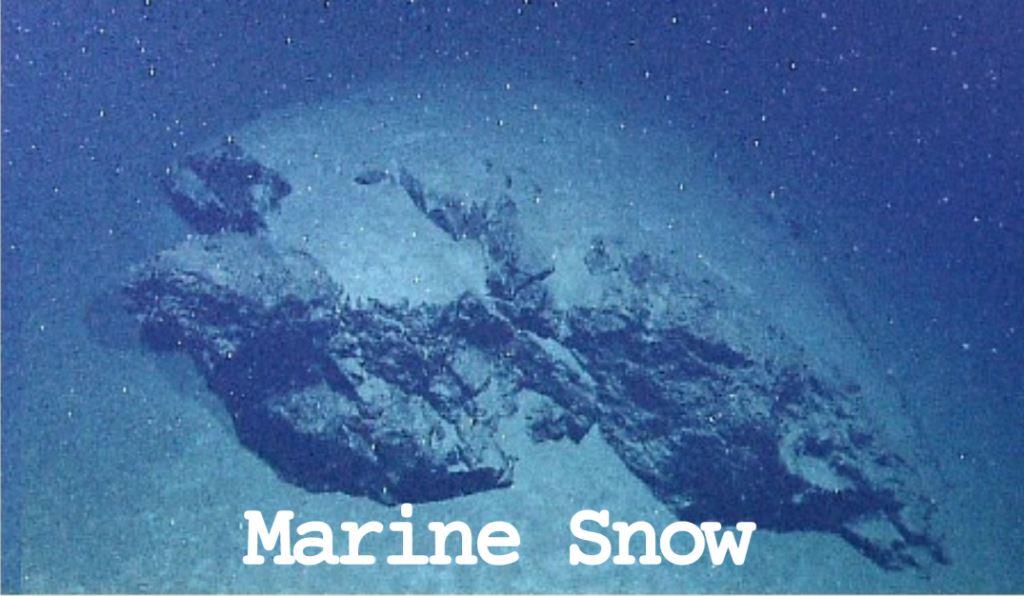A serene underwater world, where divers glide through crystal-clear waters, witnessing a mesmerizing spectacle that resembles snowfall. But hold on a second – this isn’t your typical winter wonderland. It’s something far more intriguing, known as “marine snow.” This underwater phenomenon has captivated the imagination of scientists and explorers alike. Let’s dive into the depths of the ocean and explore the curious case of “marine snow” and its hidden secret – plastic pollution.
Table of Contents
ToggleSecret Life of Marine Snow
Imagine watching snowflakes dance in a gentle breeze, except instead of ice crystals, you have an underwater flurry of tiny white specks. This ethereal phenomenon, known as “marine snow,” was first stumbled upon by divers and later documented by submarine cameras. It is an interesting sight, but here is the twist In recent years scientists have made a startling discovery. This seemingly pure “snow” harbors an insidious secret – plastic pollution.
Microplastics: The Unseen Invaders
Within this marine snow, lurking beneath the surface, are microplastics – fragments of plastic ranging from half a millimeter to five millimeters in size. These minuscule menaces, invisible to the naked eye, are the hidden villains in the ocean’s plastic pollution saga. According to research cited by Science Daily, our oceans are now home to an astonishing 24.4 trillion microplastic pieces, collectively weighing up to half a million tons. But here’s the kicker: these numbers likely underestimate the true extent of the problem.
A Deceptive Delight
To the untrained eye, marine snow may seem unappealing, composed primarily of waste, dead and decomposing animals, feces, silt, and other organic debris, as the Smithsonian Institution reveals. NOAA’s Ocean Service reports that marine snow is rich in carbon and nitrogen, essential nutrients for all forms of marine life, including the scavengers of the deep sea. As it gradually descends, marine snow blankets the ocean floor, accumulating over millions of years and reaching depths of up to six meters.

The Unseen Threats
When we think of plastic pollution in the ocean, our minds often conjure images of large plastic objects endangering marine life. We visualize entangled sea creatures and birds struggling for survival. However, the reality is far more complex. As the Woods Hole Oceanographic Institution points out, only a fraction of the plastic entering the sea remains as large, visible pieces. The rest undergoes a transformation, breaking down into trillions of microplastic fragments, hidden from plain sight.
The Unexpected Sources of Microplastics
Surprisingly, microplastics come from various sources beyond our common perception of plastic waste. According to Woods Hole, these small fragments include “microbeads” found in toothpaste and body-cleansing products and “nurdles” created from snap-off plastic tabs. Astonishingly, Pew Trusts reveals that over three-quarters of microplastic pollution in the ocean might originate from an unexpected source – tire wear. Synthetic rubber particles from tires wash into highway storm drains, eventually finding their way into the sea.
The Endless Cycle of Plastic
Plastic pollution in the ocean is a complex web of interactions between various sources and marine life. Pieces of plastic can be ingested by fish and other sea creatures, later excreted as fecal pellets. They can also serve as anchoring points for colonies of marine microorganisms. This sets the stage for a fascinating cycle. Nature reports on the possibility of a widespread entrainment/release cycle dominating the transport of biologically active plastic particles. As microplastics become intermixed with living cells, a process called biofouling occurs. This results in a “plastic-organic aggregate” with negative buoyancy, gradually sinking toward the ocean’s depths. Pressure and chemical changes then remineralize the plastic, clearing away biofouling. Once restored, the buoyant plastic ascends to the sunlit upper waters, where biofouling can repeat the cycle.
A Tangled Web of Consequences
Filter-feeding sea creatures like oysters and scallops face exposure to microplastics, eventually passing them along to humans when consumed. The full extent of the marine contribution to our food chain remains largely unknown, yet another enigma of the deep sea that we are just beginning to unravel. Comprehensive research is mandatory for us to grasp the true impact of microplastics on our oceans.
The hidden world of “marine snow” serves as a poignant reminder of the ongoing battle against plastic pollution in our oceans. While it may appear as an enchanting underwater spectacle, the reality is far less glamorous. Microplastics these small but powerful adversaries, continue to penetrate every corner of our marine ecosystems posing a threat to both ocean life and human health. As we continue to explore the depths of our oceans we must remain alert and proactive in our efforts to mitigate this silent threat. Only by understanding and action can we hope to preserve the beauty and life of our precious marine environments.
Also read:
1. What is marine snow?
Marine snow is a captivating natural spectacle that occurs beneath the ocean’s surface. It’s like an underwater snowfall, with countless tiny white specks swirling in the currents and gradually sinking into the ocean’s depths.
2. How was marine snow discovered?
The mesmerizing phenomenon of marine snow was first brought to light by divers who had the privilege of witnessing it firsthand. Submarine cameras later captured this spectacle, providing us with a closer look at this underwater marvel.
3. What role does marine snow play in marine ecosystems?
While marine snow might not sound appetizing to us, it’s a veritable feast for marine life dwelling in the ocean’s intermediate and lower depths. Rich in carbon and nitrogen, marine snow provides essential nutrients for these creatures.
4. Where do microplastics come from, besides typical plastic waste?
Microplastics come from surprising sources. Apart from typical plastic waste, they can originate from “microbeads” in personal care products and “nurdles” from snap-off plastic tabs. Even tire wear contributes to microplastic pollution, with bits of synthetic rubber finding their way into the ocean.
5. What happens to microplastics once they enter the ocean?
Once microplastics enter the ocean, they embark on a complex journey. They can be ingested by marine life, excreted as fecal pellets, provide anchoring points for marine microorganisms, and eventually become part of a “plastic-organic aggregate” that sinks to the ocean floor.
6. How do microplastics affect our food chain and human health?
Microplastics can make their way into our food chain when filter-feeding sea creatures like oysters and scallops consume them. The complete effect of this on human fitness is even under investigation.



2 thoughts on “Plastic Pollution in the Ocean: Unveiling the Secret Life of “Marine Snow””